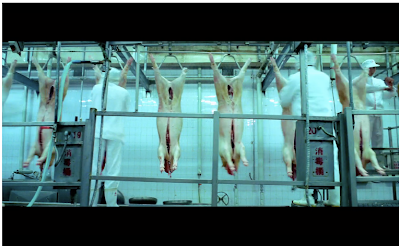1. Frozen TV dinners, 800 to 2,000-plus milligrams (mg)
2. Frozen pizza, 2,645 mg
3. Pretzel rods, 1,350 mg
4. Canned chili, 1040 mg
5. Lunch meat, 150 mg per slice
6. Canned soup, 870 mg
7. Packaged macaroni and cheese, 533 mg
8. Flour tortilla, 450 mg
9. Canned vegetables, 250 mg
10. Breakfast cereal, 175 mg
compare with other comparable web listings:
10. Snacks like potato chips, popcorn, and pretzels
9. Meat dishes that are "mixed"
8. Pasta
7. Cheese
6. Cheeseburgers and sandwiches
5. Soups
4. Poultry products
3. Pizza
2. Luncheon meats
1. Bread and rolls
Foods containing or eaten with enriched bleach flour (wheat flour, malted barley flour, iron, thiamin mononitrate, riboflavin, folic acid, water, sugar, and 2% or less of salt, potato flour, cultured wheat flour, yeast, distilled vinegar, dough conditioners, sorbitan monostearate, soy lecithin, milk and soy flour -- a.k.a. Wonderbread) seem to be a major player in sodium intake.
US Dietary Guidelines (opaque)
differed from information at Center for Disease Control and their fact sheet.






















